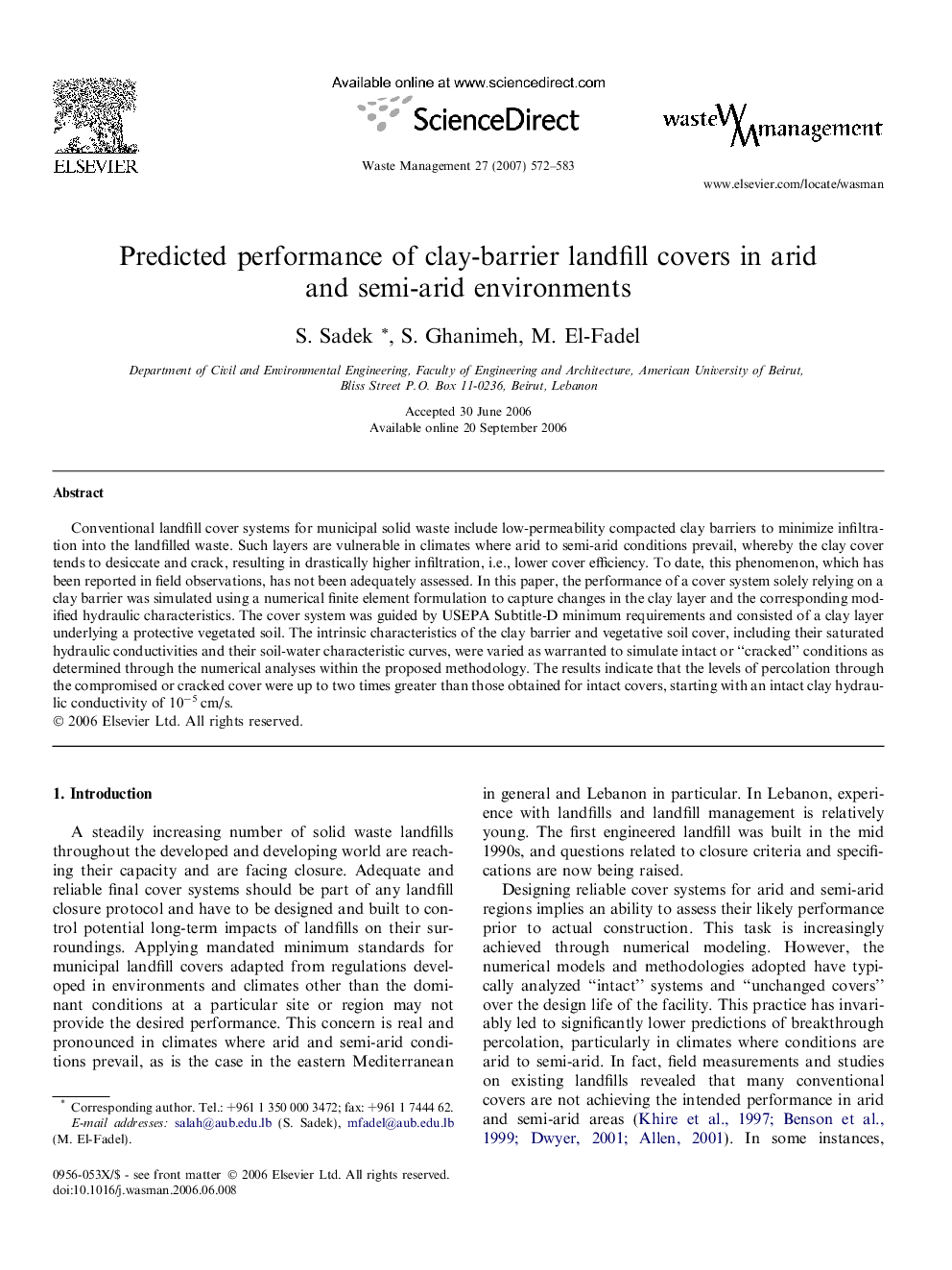| Article ID | Journal | Published Year | Pages | File Type |
|---|---|---|---|---|
| 4473606 | Waste Management | 2007 | 12 Pages |
Conventional landfill cover systems for municipal solid waste include low-permeability compacted clay barriers to minimize infiltration into the landfilled waste. Such layers are vulnerable in climates where arid to semi-arid conditions prevail, whereby the clay cover tends to desiccate and crack, resulting in drastically higher infiltration, i.e., lower cover efficiency. To date, this phenomenon, which has been reported in field observations, has not been adequately assessed. In this paper, the performance of a cover system solely relying on a clay barrier was simulated using a numerical finite element formulation to capture changes in the clay layer and the corresponding modified hydraulic characteristics. The cover system was guided by USEPA Subtitle-D minimum requirements and consisted of a clay layer underlying a protective vegetated soil. The intrinsic characteristics of the clay barrier and vegetative soil cover, including their saturated hydraulic conductivities and their soil-water characteristic curves, were varied as warranted to simulate intact or “cracked” conditions as determined through the numerical analyses within the proposed methodology. The results indicate that the levels of percolation through the compromised or cracked cover were up to two times greater than those obtained for intact covers, starting with an intact clay hydraulic conductivity of 10−5 cm/s.
